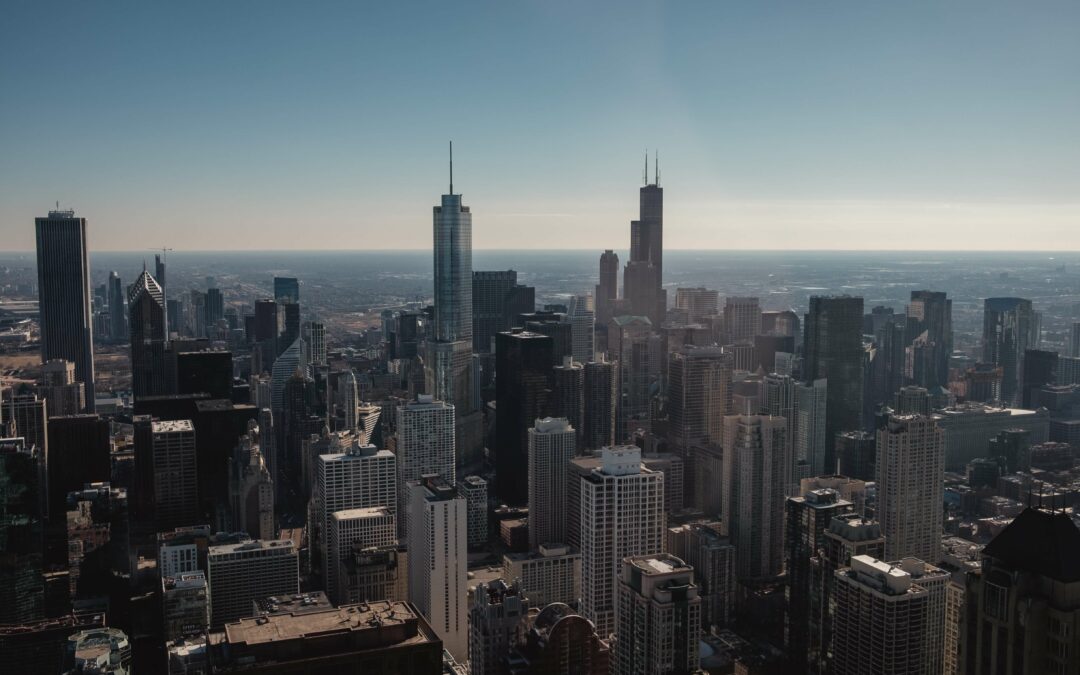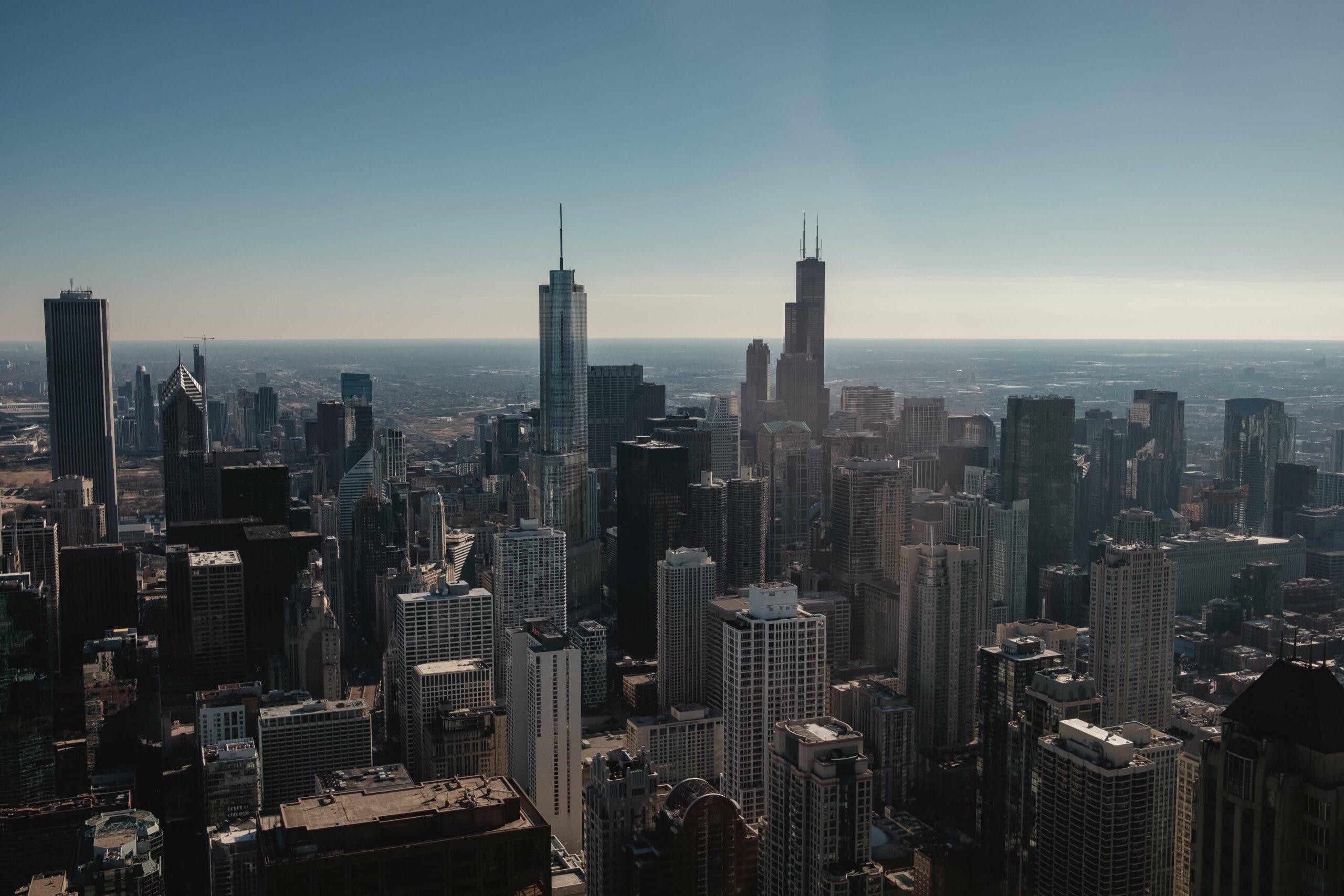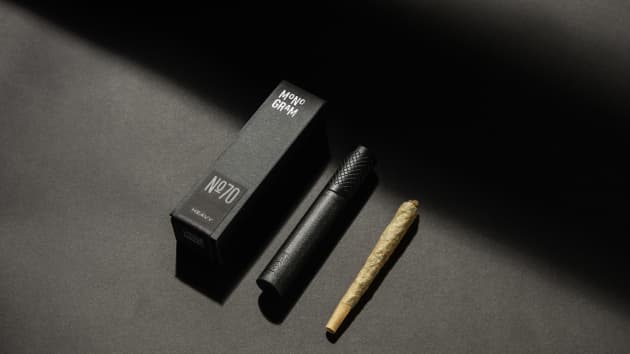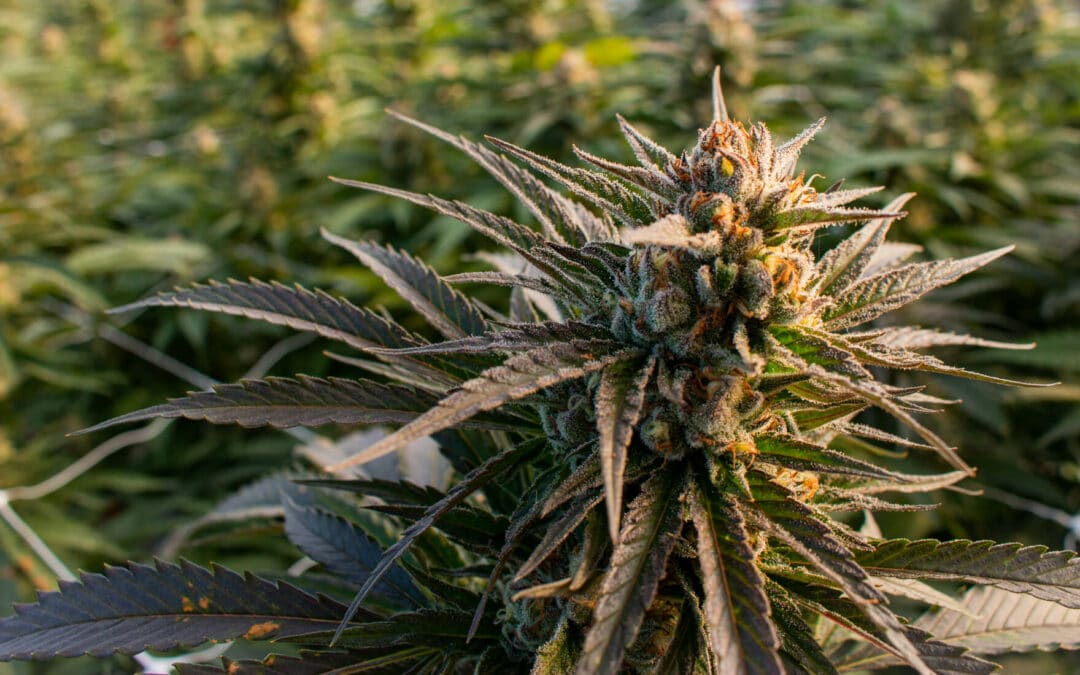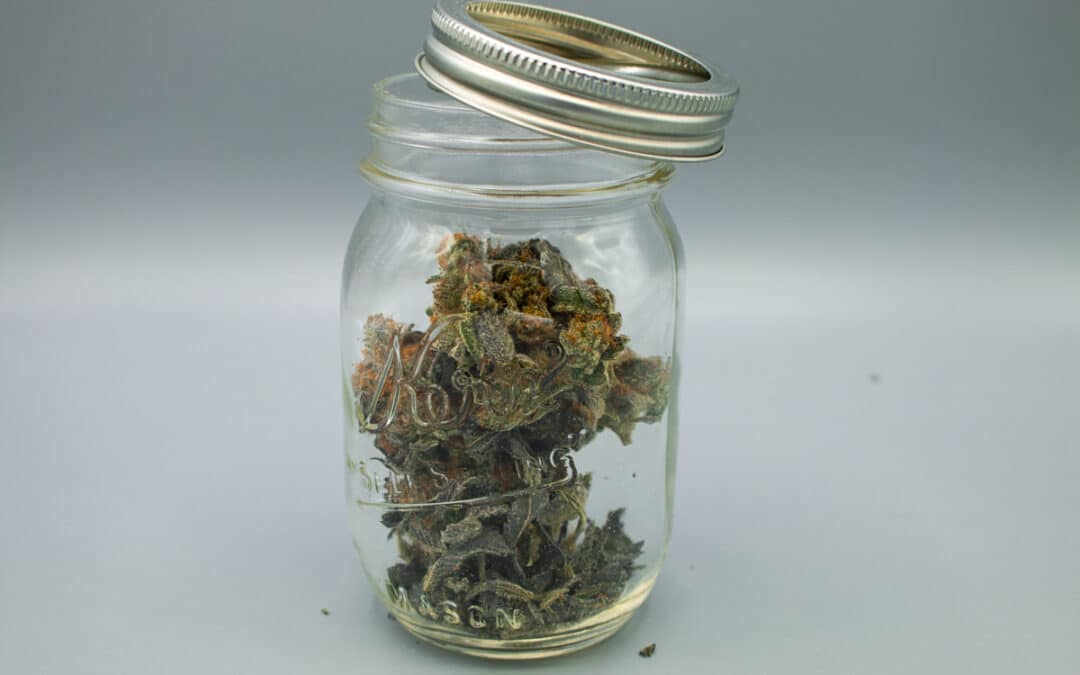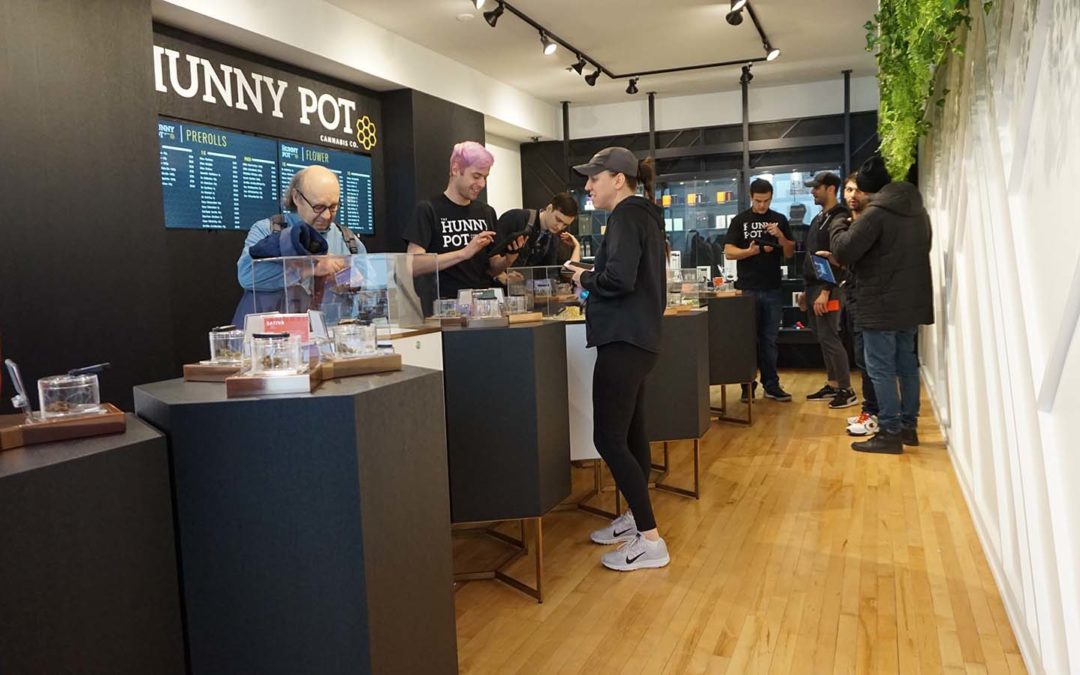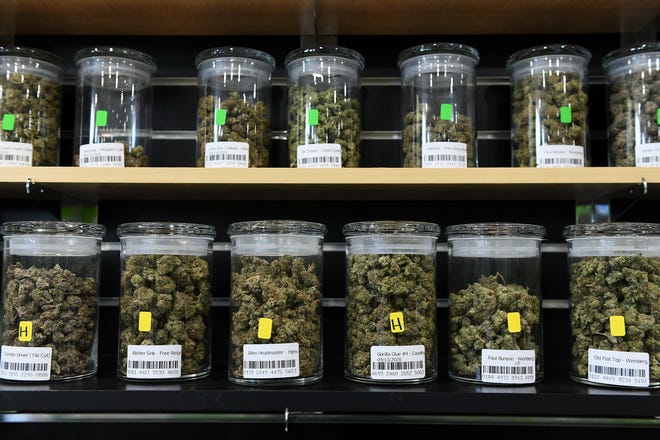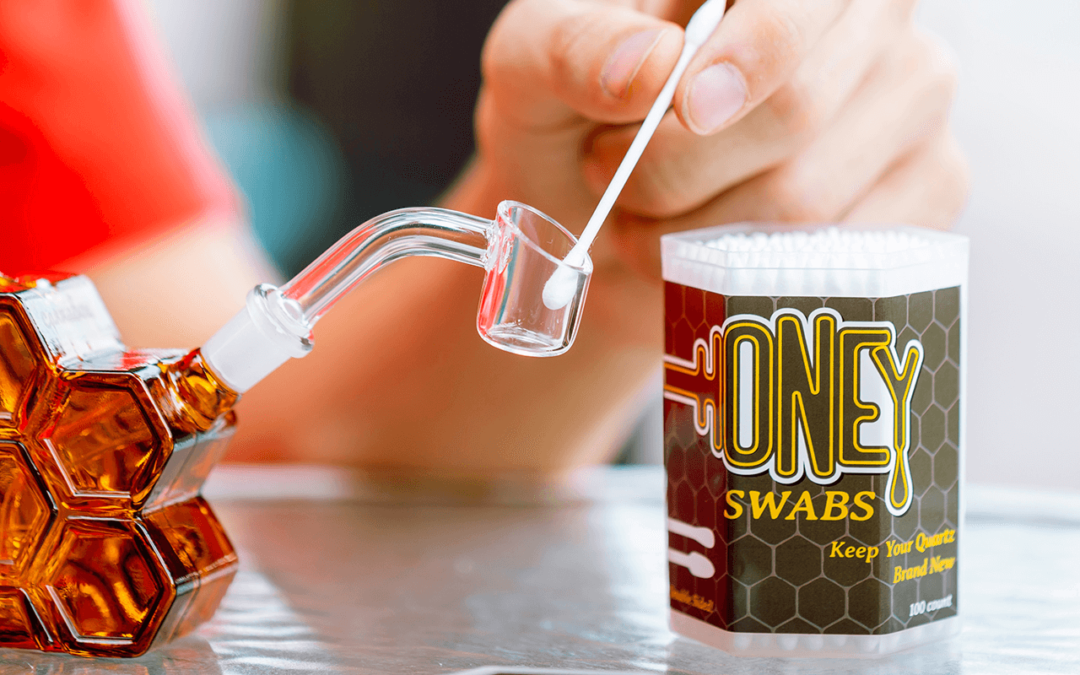
Are You Ready for Your First Dab?
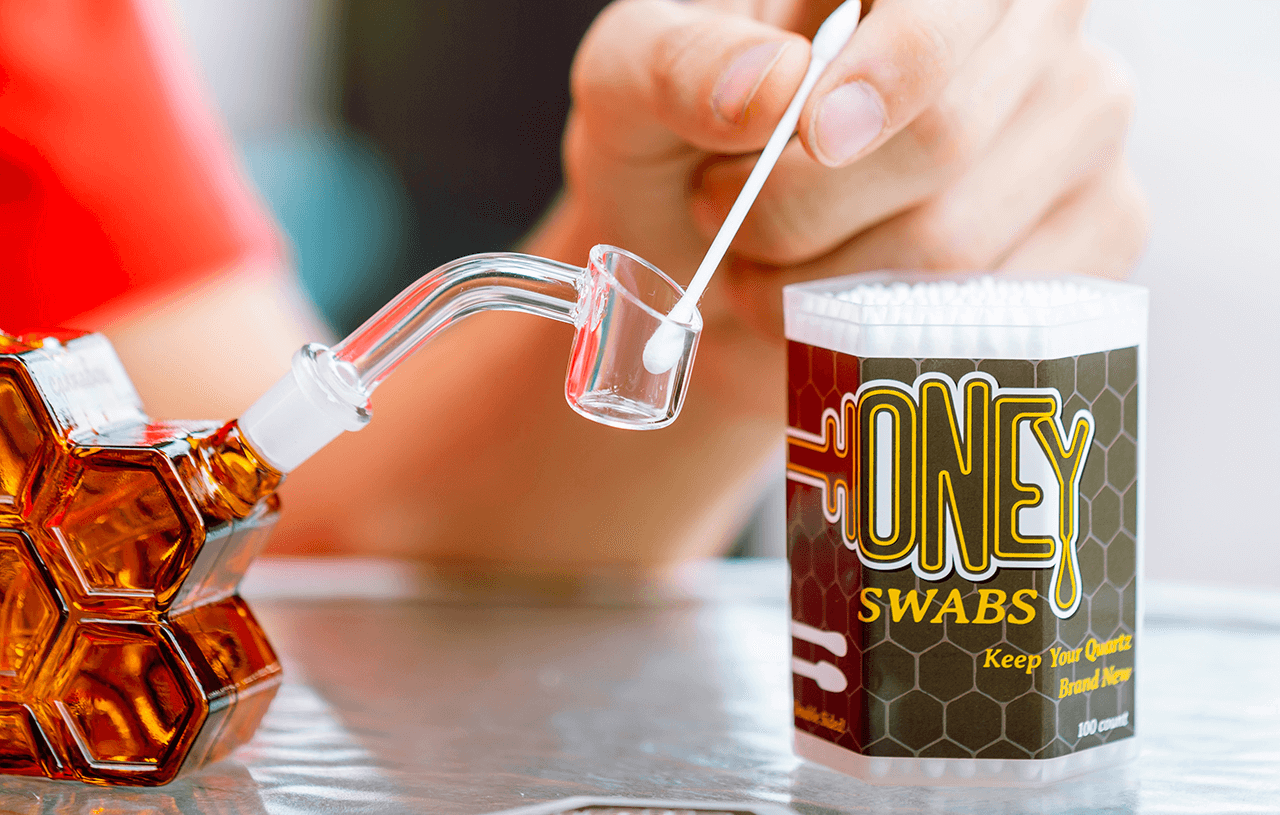
Shatter, wax, crumble, high terpene full spectrum, extractions and concentrates.
These are all different names and varieties of the same common-place term we’ve all heard way too many times thanks to social media; dabs.
So, let’s dive into the hottest product in the cannabis industry since cannabis and what to expect from your first dab.
What is a dab?
Simply put, a dab is a concentrated form of THC that is extracted from cannabis flower using some type of solvent, such as butane or CO2, as well as newer methods that don’t involve solvents like rosin and ice-water hash. There are even distillate options that isolate just THC while removing other cannabinoids and terpenes to create a more potent product.
Concentrates are also consumed in a different, much more eccentric manner than simply lighting up a bong. A blow torch is used to heat up a metal, glass or ceramic element that takes the place of a normal bowl-piece that would be on a bong, called the nail. The bong that is used for dabs is commonly called an oil rig or just a rig. The concentrate is then dropped or “dabbed” into the nail using a “dabber” or narrow pointed tool with the concentrate on the tip.
The high heat of the nail from the blow torch instantly evaporates or at lower temperature melts down the concentrates, which is then inhaled like a normal hit from a bong. The difference between a dab and a bong hit however, is blatant.
What’s the Difference?
Compared to dry flower, concentrates are much more potent, with certain concentrates surpassing 80% or even 90% THC, whereas the most potent flower rarely passes 30%. Suffice to say taking one dab compared to one puff from a pipe will yield much different, and typically much more intense results.
Imagine if there was a tiny little speck of cannabis about the size of a bread crumb, and consuming that one crumb did more than an entire bowl-pack. That is what a dab is in comparison to dry flower.
Whereas a few puffs from a pipe may lead to a nice effect that last a couple hours, a dab will provide stronger effects that may not last as long.
Additionally, the taste of concentrates in comparison to dry flower is much cleaner and smoother, though I promise it won’t seem that smooth after you exhale. Unless you’re a pro already in which case this whole article is irrelevant.
What’s it Like?
Now it’s story time. My first dab experience was intense, scary, relaxing, and exhilarating all at the same time. It wasn’t necessarily what happened to me, but what happened to the friend I was with, we’ll call him Todd. The two of us were very different in our enjoyment of cannabis, mine being much more prevalent than his, his being very little outside of special occasions.
While hanging out at Todd’s place, another friend from down the block came by with some wax, we’ll call him Jack. This was back in the early days when concentrates first started hitting the market, so I had very little info about them and Todd was clueless. I had smoked with Todd maybe one other time prior to this, and it was pretty tough to convince him then.
I managed to convince Jack to take a dab with me so I wouldn’t be alone taking one for my first time. I was first to take my dab and was instantly struck with awe and confusion upon seeing how it worked. Jack turns on a small blow torch and begins to heat up the nail while I stare like a caveman that just discovered fire.
Jack hands me the dabber with the wax on the tip, at which point I said, “That’s it?”, thinking there was no way a tiny little speck could actually be that effective.
“Trust me,” Jack replied. “This will be plenty.”
I take the dabber as Jack hands me the rig with the red hot nail on top. After waiting about 30 seconds, I rub the dabber inside the nail as smoke billows from within. I inhale and pull the hit in through a central hole in the middle of the nail. The taste was like an exemplified cannabis flavor without the harshness of plant matter tasted in dry cannabis, followed by an instantaneous attempt by my body to expel my lungs.
Imagine taking the biggest bong rip of your life, only to cough your brains out for minutes afterward. Compared to the coughing I endured from my first dab, that bong rip is nothing. I coughed my brains out for five minutes, easy. Todd followed up with what looked like a slightly bigger dab than mine, which was the first sign that things were about to take a dark turn.
Todd smoked once a month tops, and had even less of a clue about dabs than me. With the knowledge that he is just supposed to pull as hard as he would from a bong, Todd ripped the dab faster and harder than anybody I’d ever seen. By the will of some greater power he managed to hold it in for a few seconds before exhaling a massive cloud.
Now, I thought my coughing fit was bad, but Todd made me look like a champion once he started. Imagine watching a sitcom on TV, but instead of a laugh track it’s a cough track. That’s what it was like after Todd took his dab. Non-stop coughing ensued as his face turned bright red. What followed is the reason you should always do your research before trying something new.
Todd went into the bathroom after he’d been coughing for probably 10 minutes, and comes out a few minutes later and says in-between coughs, “Am I not supposed to be able to breathe?”, to which everybody replies a resounding “No”. Panic ensues (mainly from Todd), while everybody else giggles quietly knowing he couldn’t actually die from a dab. We manage to calm him down enough as his coughing starts to fade, which gives way to a sedated horse effect.
Now at this point I was feeling terrific. The effects of a dab compared to dry flower are much more noticeable immediately after, which fades into a lighter feeling high that isn’t as cumbersome as dry flower. It’s like getting all the great effects of a bong rip without the cloudiness that sometimes comes along with it.
Todd on the other hand, was on a whole different level. He had forgotten how to use his limbs, and at this point was under a blanket on the couch cuddled up to another guy, who was giving him water through a straw because he couldn’t move his arms to take the cup. This brings us to the conclusion of this wild first dab, and the reality is that it isn’t nearly as crazy or extreme as it’s been made out to be.
It’s all about the individual. Todd and I’s tolerances were much different and so we both handled the dab in very different ways, and I was much better suited to tolerate the extreme difference in affect due to my experience.
Your First Dab
Now you know what a dab is, what makes it different from normal cannabis, and an anecdotal story that shares both sides of the experience. When it comes to your first dab I cannot stress enough, always start small. Dabs are already very small, so if it looks too small to you, it’s probably just the right size to start with.
Be aware that you are consuming a much more potent form of cannabis and THC, and you will notice the difference instantly. Due to the potency, you can also quickly build a tolerance, and going from dabbing all the time back to normal smoking might be less rewarding than before you started taking dabs as it won’t provide the same strong effects.
Lastly, just have fun!
Dabs are always getting better with new methods of extraction coming about all the time, and your local dispensary will always have a bunch of options to pick from. Pick the brain of your budtender and figure out what strain would be best for your first dab. Just don’t do the stupid dab gesture afterward, you’ll look like an idiot.

